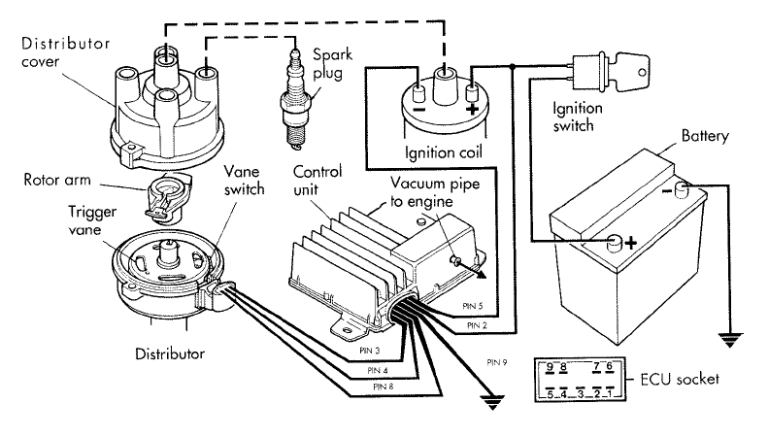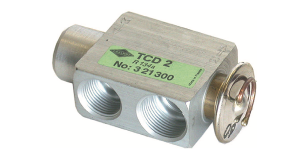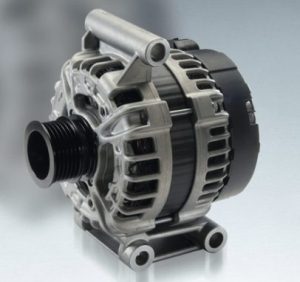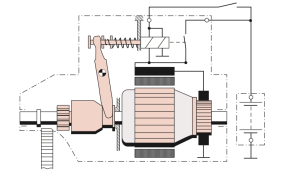In early engine management systems, distributor-based engine speed sensing was a common method for measuring the rotational speed of the engine. The distributor is a component of the ignition system that is responsible for distributing high voltage from the ignition coil to the spark plugs in the correct firing order.
The distributor also includes a rotating cam that is connected to the engine’s camshaft. As the camshaft rotates, it pushes the distributor’s rotor arm, which in turn directs the high voltage from the ignition coil to the appropriate spark plug.
To use the distributor for engine speed sensing, a sensor is mounted in close proximity to the distributor’s rotating cam. This sensor detects the passage of teeth on the cam and sends a signal to the engine management system’s electronic control unit (ECU). The ECU can then use this information to accurately determine the engine’s speed and adjust the timing of the ignition and fuel injection accordingly.
One advantage of using the distributor for engine speed sensing is that it is a relatively simple and reliable method. The distributor is a well-proven component that has been used in internal combustion engines for many decades. It is also a relatively low-cost component compared to other types of speed sensors.
However, there are some limitations to using the distributor for engine speed sensing. For example, the accuracy of the sensor’s output can be affected by wear and tear on the distributor’s rotating cam. In addition, the distributor’s mechanical nature means that it is subject to mechanical failure and wear over time.
Another limitation of using the distributor for engine speed sensing is that it is a discrete sensor, meaning that it only provides a signal when the cam’s teeth pass by the sensor. This can limit the resolution of the sensor’s output and make it more difficult to accurately measure engine speed at very low or very high RPMs.
Despite these limitations, the distributor-based engine speed sensing method was widely used in early engine management systems and helped pave the way for the development of more advanced engine management systems that use more precise and sophisticated sensors. Today, many modern engines use sensors such as hall-effect sensors, optical sensors, or magnetic sensors to accurately measure engine speed and provide more precise control over ignition timing and fuel injection.
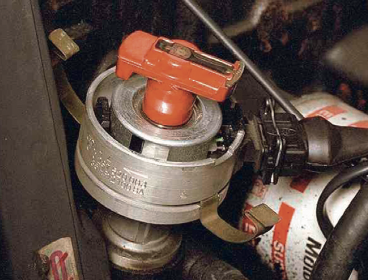
In distributor-based engine speed sensing systems, the sensor that detects the rotating cam’s teeth is usually a reluctor sensor. This type of sensor generates a signal when a ferrous metal object, such as the teeth on the cam, pass through its magnetic field. The sensor contains a coil of wire that generates an alternating current (AC) signal when the teeth on the cam pass through its magnetic field, causing changes in the magnetic flux.
The AC signal generated by the reluctor sensor is then conditioned and amplified by the ECU to produce a digital signal that indicates the engine’s speed. The digital signal is usually a square wave with a frequency proportional to the engine’s rotational speed. The ECU uses this signal to control the ignition timing and fuel injection timing to ensure optimal engine performance.
One advantage of using distributor-based engine speed sensing is that the system is self-contained and requires no external sensors or components. The distributor assembly provides both the high voltage for the ignition system and the signal for engine speed sensing. This reduces the complexity and cost of the engine management system compared to systems that use separate sensors for engine speed sensing.
However, the mechanical nature of the distributor means that it can suffer from wear and tear over time, which can affect the accuracy and reliability of the engine speed signal. For example, worn distributor shaft bushings can cause the distributor shaft to wobble, which can affect the sensor’s output. Additionally, worn distributor shaft gears or cam lobes can cause the distributor rotor to rotate inconsistently, which can also affect the sensor’s output.
Furthermore, distributor-based engine speed sensing systems can also suffer from signal noise due to electrical interference or mechanical vibration. This can affect the accuracy of the engine speed signal and lead to unstable engine performance.
In conclusion, while distributor-based engine speed sensing was a common method used in early engine management systems, it has limitations and is not as accurate or reliable as modern sensor technologies. Today, modern engine management systems use more advanced sensors such as hall-effect sensors, optical sensors, or magnetic sensors to accurately measure engine speed and provide more precise control over ignition timing and fuel injection.
Advantages:
- Simplicity: Distributor-based engine speed sensing is a relatively simple and reliable method. The distributor is a well-proven component that has been used in internal combustion engines for many decades. It is also a relatively low-cost component compared to other types of speed sensors.
- Self-contained: The distributor assembly provides both the high voltage for the ignition system and the signal for engine speed sensing. This reduces the complexity and cost of the engine management system compared to systems that use separate sensors for engine speed sensing.
- Proven Technology: Distributor-based engine speed sensing has been used for many years, and its reliability and durability have been well-established.
Disadvantages:
- Limited Resolution: The distributor is a discrete sensor, meaning that it only provides a signal when the cam’s teeth pass by the sensor. This can limit the resolution of the sensor’s output and make it more difficult to accurately measure engine speed at very low or very high RPMs.
- Mechanical Wear and Tear: The accuracy of the sensor’s output can be affected by wear and tear on the distributor’s rotating cam. Additionally, the distributor’s mechanical nature means that it is subject to mechanical failure and wear over time.
- Signal Noise: Distributor-based engine speed sensing systems can suffer from signal noise due to electrical interference or mechanical vibration. This can affect the accuracy of the engine speed signal and lead to unstable engine performance.
- Maintenance: Maintenance is required to ensure that the distributor and the sensor are functioning properly. The distributor cap and rotor need to be inspected and replaced periodically to ensure proper operation.
In conclusion, while distributor-based engine speed sensing is a reliable and proven technology, it has limitations that make it less accurate and reliable than modern sensor technologies. Modern engine management systems use more advanced sensors such as hall-effect sensors, optical sensors, or magnetic sensors to accurately measure engine speed and provide more precise control over ignition timing and fuel injection.

